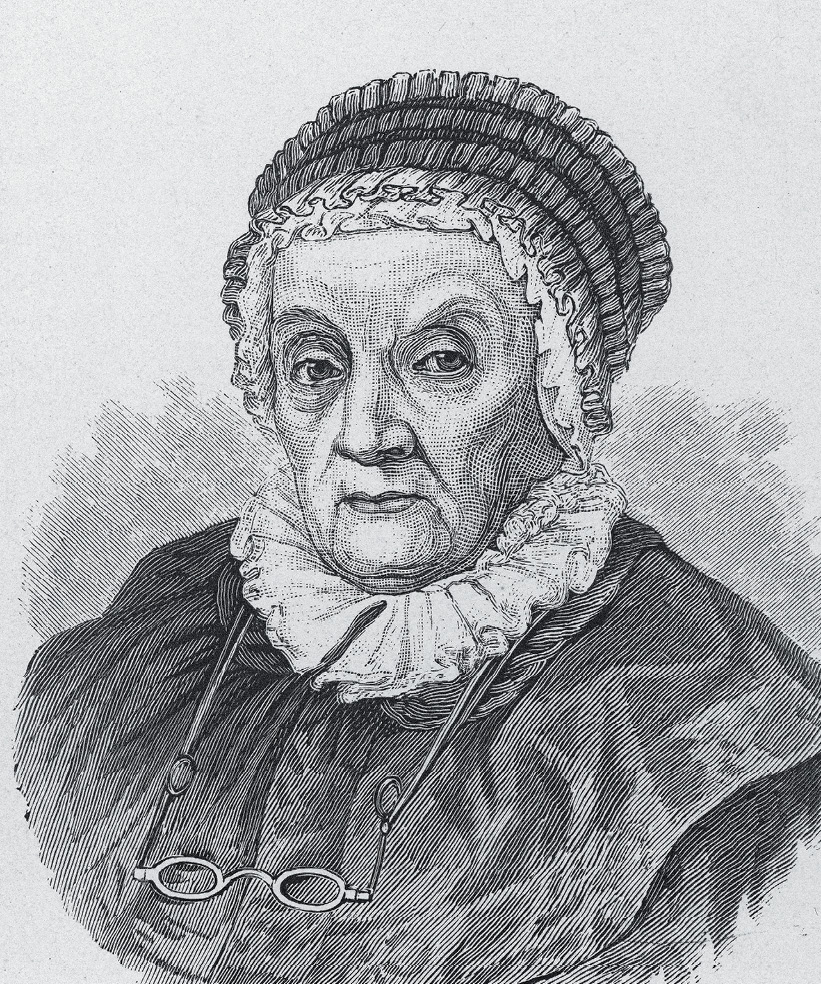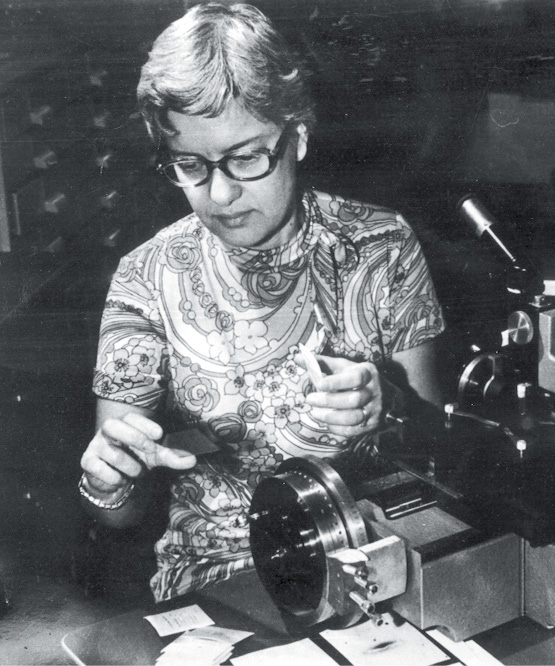Caroline Herschel and Vera Rubin

CAROLINE HERSCHEL

VERA RUBIN
Chelsea
Caroline Herschel grew up in Hanover in present-day Germany, the eighth child of Isaac, an oboist, and his wife, Anna Ilse. When she was ten years old, in 1760, Caroline contracted typhus, a bacterial disease that can cause a terrible fever and rash and even be fatal. She made a full recovery, but she stopped growing. Her father had previously educated Caroline along with her brothers; that stopped after her illness. Her parents thought she would never marry because of her height—she was just over four feet tall, and they assumed that her small stature would inevitably lead her to a life of servitude.
But Caroline didn’t believe her parents’ predictions. When she was twenty-two, she left her native Germany to follow her older brother William to Bath, England. At the time, William was a composer, musician, and choral director. Caroline performed in his choir and kept house for her brother. In addition to music, William was also interested in astronomy and telescope design. Caroline assisted by experimenting with different types of lenses and optical tube lengths. When William discovered the planet Uranus, he was knighted and appointed court astronomer to King George III (yes, that King George III, from American history books and of Hamilton fame). William was the first person to discover a new planet in more than two thousand years. Suddenly, music became his hobby and astronomy his profession.
Caroline continued to help her brother with his experiments while pursuing her own studies in math and astronomy. William built larger, longer, and more powerful telescopes, often using lenses that Caroline had helped make in their laboratory next to the kitchen and the mirrors she had helped polish. In 1789, with Caroline’s help, William finished building what was then the largest telescope ever; it had a focal length of forty feet. It took four years to construct and stood intact for more than fifty.
While William got most of the credit for their joint efforts, ten years after moving to England, Caroline became her brother’s official apprentice. King George, recognizing her talent, began to support her career and work directly—likely the first time a woman was formally acknowledged by the British monarch for her scientific acumen. She proved herself to be more than deserving of such recognition.
On August 1, 1786, Caroline was looking through one of their telescopes when she noticed something moving across the sky: a never-before-identified comet. She saw it again the next night and alerted her brother and other fellow astronomers to its presence. Her brother deemed it, appropriately, “My Sister’s Comet.” Caroline is now known as the first woman ever to discover a comet. She would go on to discover eight in total.
Caroline was seventy-two years old when her brother died. After his death, she continued to record every observation she and her brother had made and noted the discrepancies between their work and the prevailing star catalogue of the time. Her “Catalogue of the Stars” was published in 1798. In 1828, the Royal Astronomical Society awarded her their Gold Medal for her work. No woman would be so honored again until 1996, almost 170 years later.
Caroline lived to be ninety-eight years old in an era when the average life expectancy for women was just fifty-five. Her astronomical maps are still in use today. When I learned that more than two decades ago, it astounded me—that someone could have so much clarity and vision that her work would help provide insight to scientists over two hundred years later.
More than eighty years after Caroline’s death and on a different continent, Vera Rubin fell in love with the night sky outside her childhood bedroom window. Her father helped her build her own telescope, and he accompanied her to amateur astronomers’ meetings. At her Vassar College graduation in 1948, she was the only graduating student who had majored in astronomy. After college, she hoped to enroll in graduate school at Princeton to continue her studies. She was told that Princeton didn’t admit women in the astronomy program, without exception—a policy that wouldn’t change until 1975.
“We have peered into a new world, and have seen that it is more mysterious and more complex than we had imagined. Still more mysteries of the universe remain hidden. Their discovery awaits the adventurous scientists of the future. I like it this way.”
—VERA RUBIN
Whenever I think of Vera and all the women who were kept out of higher education over the centuries because of the false conceit that only men belonged there, I hope those same colleges now realize what massive mistakes they made. Vera went on to Cornell and then Georgetown, completing her PhD in 1954 and providing research that proved the existence of galactic superclusters. These groups of smaller galaxy clusters are now believed to be some of the largest features of the known universe. At the time, her work was dismissed and derided; it would be decades before her findings were widely accepted.
When Vera started her doctoral work, she was pregnant with her second child. She encountered people, notably men, in her studies who openly doubted that a woman could take on such important scientific work and questioned whether a mother could possibly be committed to her studies at such a high level. The sexism didn’t stop when she moved into her own full-time teaching and then onto a more research-oriented career. In the 1960s, one observatory where Vera hoped to work had no women researchers and no facilities for women. So Vera stuck a paper skirt to the sign outside a men’s room, turning it into a women’s restroom. With one of their main objections to her presence now removed, they had no choice but to let her become the first woman to work there; her work had earned her that right. Still, as Vera acknowledged, it took her “a long time to believe I was a real astronomer.”
Vera continued to work on galaxy clusters and observed that their rotation curves defied predictions made according to contemporary theory. Narrowing her focus to single galaxies, she detected the same disconnect. The rotations of the galaxies were so swift, Vera hypothesized that gravity alone wasn’t sufficient to explain why they didn’t splinter apart. It was the first real evidence for dark matter, which scientist Fritz Zwicky had originally suggested after observing that galaxies seemed to be held together by something more than their own mass. Vera surmised that galaxies contain many times more dark matter than ordinary matter. Subsequent research would confirm her conclusions. We now know that dark matter accounts for 85 percent of the mass in the universe.
Vera didn’t just help us understand the cosmos; her work led to new fields of study and research and inspired generations of scientists. In 1996, she became the second woman, after Caroline Herschel, to receive the Gold Medal of the Royal Astronomical Society. Vera is considered by many in her field to be one of the Nobel Prize’s most inexplicable misses. But that specific lack of affirmation for her work didn’t seem to bother her. The same force she had felt as a little girl observing the stars from her bedroom motivated her throughout her career: an insatiable desire to know more about the universe we live in. We know more about our universe today thanks to Vera and Caroline.